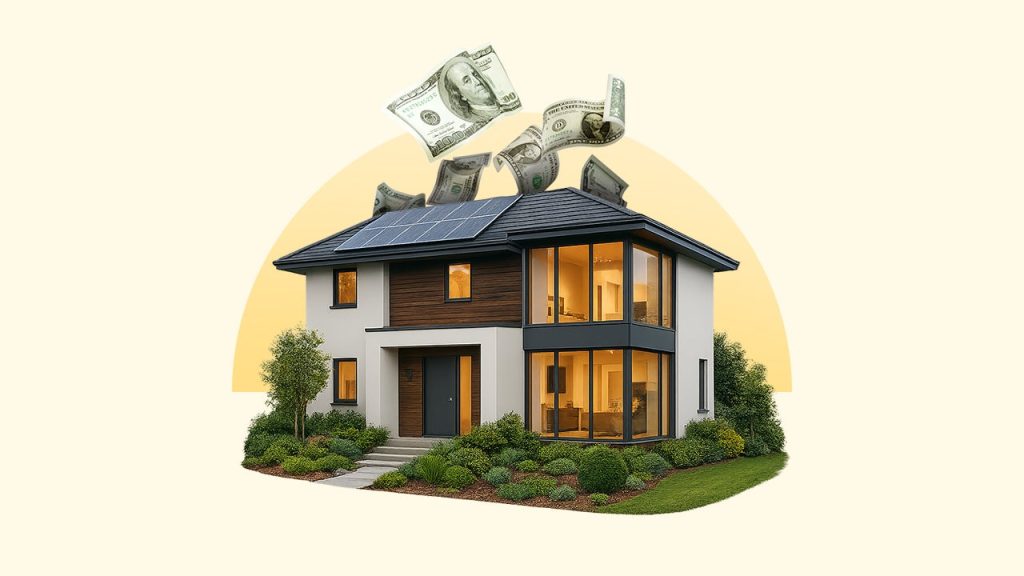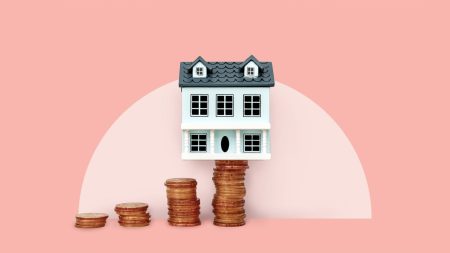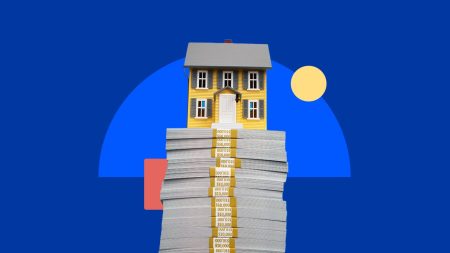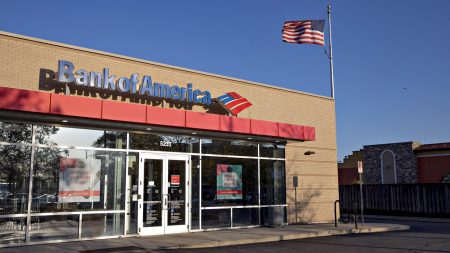Key takeaways
- With home values at historic highs, tapping home equity is tempting if you need cash.
- However, while home equity loan and HELOC rates are lower now than they have been over the past year, they’re still higher than historical norms.
- Of the borrowing methods, HELOCs might be a better deal than home equity loans right now, as their rates have dropped more substantially. They also offer more flexibility and speed in funding.
If you’re a homeowner, odds are you’re sitting on a sizable source of cash right now.
As housing prices continue to soar, so has the worth of home equity (basically, your home’s value, minus the mortgage outstanding). At year-end 2024, the average mortgage-holding homeowner had an equity stake worth $303,000, according to property data analyst Cotality.
And homeowners are tapping into that stake, borrowing against it for ready money — despite the fact that home equity loan and HELOC interest rates are well above the historic lows reached during the COVID pandemic.
So, is tapping your home equity a good idea these days? Depends on who you ask and what it’s for. Let’s crunch some numbers.
Bankrate insights
What’s happening with HELOC and home equity loan rates?
First, what’s behind the roller-coaster ride in home equity rates? At the beginning of 2024, the average rate on a HELOC was 10.16 percent, a record high, according to Bankrate’s survey of the nation’s largest lenders. dropping as low as 7.9 percent in April — a two-year low. Home equity loan rates have also fallen, down to 8.36 percent — lower than they’ve been in about a year.
A lot of the drop is due to the Federal Reserve: The central bank lowered benchmark interest rates a total of one percentage point near the end of 2024, as inflation became more manageable. According to McBride’s home equity forecast, both rates will continue to decline in 2025, assuming the Fed continues to cut interest rates.
As of mid-May, here’s where the average home equity loan and HELOC rates stand:
| HELOC | 10-year home equity loan | 15-year home equity loan |
|---|---|---|
| 8.14% | 8.52% | 8.42% |
How interest rates impact home equity borrowers
Currently, the average home equity loan and HELOC rate ranges from 6.32 percent to 12 percent, depending on the loan terms, the lender and your finances, according to Bankrate’s survey of the nation’s largest lenders. However, just three years ago, these averages were closer to 5.50–6 percent.
The difference in rates affects your monthly payment and the total interest you pay. Let’s compare two $50,000 10-year fixed-rate home equity loans, with one at 6 percent and another at 10 percent:
| $50,000 10-year home equity loan | 6% interest | 10% interest |
|---|---|---|
| Monthly payment | $555 | $661 |
| Total interest paid | $16,612 | $26,290 |
If you had a 10 percent interest rate, your monthly payment would be $106 more than with a 6 percent rate. And the total interest you would pay over the loan’s lifetime is $26,290 — almost $10,000 more.
Why are home equity loans popular now?
With home values at historic highs, it’s no wonder that tapping equity is tempting. “If you have a major unplanned expense or home remodeling project, home equity is often the route taken to finance it,” says McBride. But why via home equity loans or HELOCs? Largely because the only other way, a cash-out refinance, doesn’t make much financial sense these days. Many homeowners have primary mortgages locked in at 3 or 4 percent — about half of current mortgage rates now – which they don’t want to lose. So, rather than replacing their main home loan, they’re taking out a second one instead.
Also, because home prices are so high and housing so scarce, many homeowners are staying put, opting to renovate their residences instead of moving. There are benefits to using a home equity loan to do so. Interest on the loan can be tax-deductible if the funds are used to repair or improve a home (and you itemize deductions on your tax return). Also, home equity products offer longer repayment terms and — even at their elevated rates — lower APRs than personal loans and credit cards.
49%
Denial rate for HELOC applications as of Q3 2024, meaning nearly half of would-be borrowers are not approved. While high, it’s more favorable than in 2021, when the majority of applicants (61%) were turned down.
Source:
Home Mortgage Disclosure Act
HELOC vs. home equity loan: Which is a better deal today?
If you have to choose between a HELOC and a home equity loan, there are a few aspects that can make a HELOC more attractive in today’s market:
- Variable rates: HELOCs have variable interest rates throughout their terms. That means borrowers will likely benefit as rates decline, whereas with a fixed-rate home equity loan, your rate stays the same.
- Speed of funding: It can take 45 to 60 days or more for a home equity loan to close. In contrast, HELOC funding can take between two and six weeks.
- Flexibility: HELOCs offer a more adaptable approach. giving you the ability to draw against available funds and pay them back like a credit card. You’re charged interest only on the withdrawn funds (not the entire credit line) and you typically have the option to make just minimum payments of interest during the draw period. With a home equity loan, you’re getting a lump sum and start paying back the principal, along with the interest, immediately.
Money tip:
Home equity loans can be a good choice if you need a specific sum for a one-time cost, like paying off outstanding credit card balances.
Drawbacks of home equity borrowing
Of course, home equity products come with caveats too. For starters, they use your house as collateral. “Home equity loans and HELOCs are tied to your home, so if you can’t make payments, you’re at risk of losing your house,” says Certified Financial Planner Chloe Moore, founder of Financial Staples, a virtual, fee-only firm. This can also put you in a bind if home prices drop significantly: In between your first and second mortgages, you could owe more money than what your home is worth.
“Consider why you’re wanting to use your home equity,” Moore adds. “If it’s for a home renovation project, could it wait? If you’re consolidating debt, do you have a solid plan to repay the loan and ensure you don’t incur more debt over time? Are you at risk for being laid off, and if so, do you have an emergency fund to cover a loss of income?” All of these things need to be carefully considered before depleting an equity stake.
If you are going to borrow from your home equity, understand … the cost of that borrowing is the highest in more than 20 years.
— Greg McBride, CFA , chief financial analyst for Bankrate
Alternatives to HELOCs and home equity loans
If you’ve decided a HELOC or home equity loan isn’t the right borrowing solution for you, alternatives exist.
Personal loans
Instead of tapping into your home equity, you could consider getting an unsecured personal loan. They aren’t tied to your home, so you don’t risk losing it if you can’t repay. They’re also convenient and quick, with funding coming in as soon as one day.
But: “that typically comes at a higher cost,” says Adam Boyd, the head of consumer lending at Citizens Bank. “The average rate you get on a personal loan is generally going to be higher than what you can get on a home-secured product.” For instance, as of mid-May, the average rate on an unsecured personal loan is 12.43 percent — a good four percentage points higher than home equity products.
Also, aside from special-purpose home improvement loans, unsecured personal loans don’t generally allow you to borrow as much. “Unless they’re in a very good financial situation …most people aren’t going to get $50,000 or $100,000,” says Ron Haynie, senior vice-president of housing finance policy for the Independent Community Bankers of America.
However, “if you’re borrowing [just] $15,000 or $20,000, and you have really good credit, the personal loan might be the better route to go,” says McBride.
Cash-out refinance
A cash-out refinance could be another option. Refinance rates remain lower than home equity loan rates and may not be that bad a deal, depending on how old your primary mortgage is, and how sizable your ownership stake.
For instance, say you are halfway through your 30-year loan term, owe $50,000 on a home valued at $400,000 and your current mortgage rate is 6 percent (the average 30-year-fixed mortgage rate back in 2008). As of Feb 3, you can get a 30-year fixed cash-out refinance for 7.01 percent and pull out $80,000 in equity. So, it may make more sense for you to refinance than to take out a home equity loan or HELOC at a significantly higher rate.
Bottom line on home equity loans today
Proceed with caution before getting a HELOC or home equity loan right now. While rates are lower than they’ve been in at least a year, that’s not to be confused with low overall. “Look at what options you may have, including not doing it,” says McBride. “If you do borrow, you’ve got to have a firm plan for paying it back.”
Not all borrowers have the option to wait for rates to drop, however. For instance, your home may need significant repairs or remodel work sooner rather than later. Or you’d really like to clear those credit card balances once and for all.
If you’re trying to tap your home equity, compare a variety of lenders and products. These rates change frequently and can vary significantly depending on the lender and your financial profile.
Also, “as you do research, don’t just focus on the advertised rate,” Boyd advises. “Talk with the lender and understand what the other stipulations are attached to that rate just to make sure you’re considering all costs associated with the loan.” This way, you can better choose the right home equity product for you — whether it’s now or in the future.
Additional reporting by Ashlee Valentine
Read the full article here









